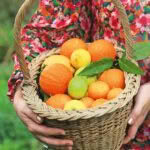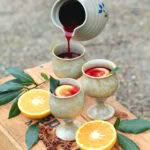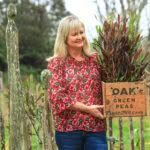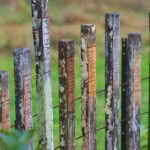Lynda Hallinan embraces nature’s stubbornness this spring
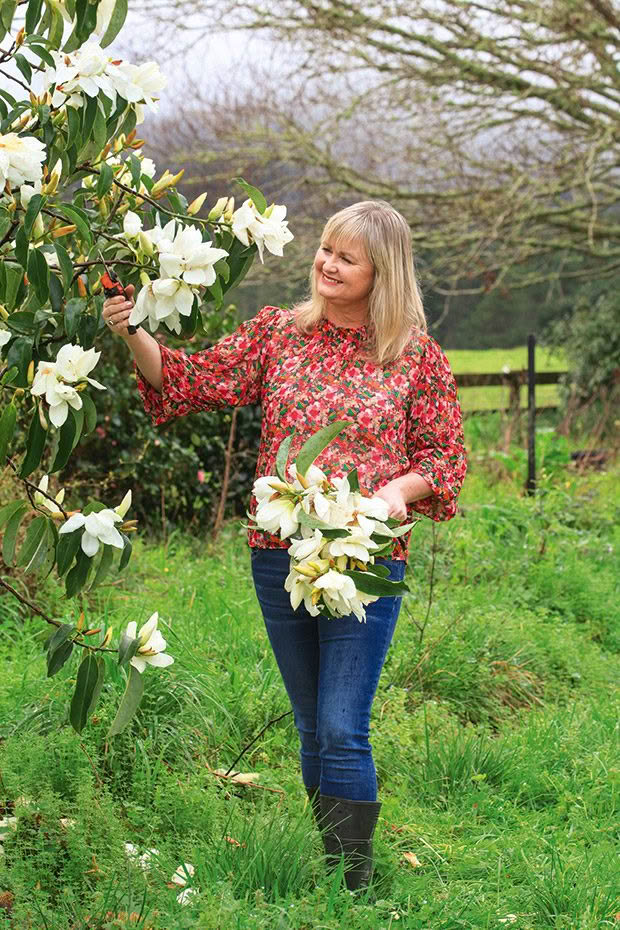
Only white camellias have worse timing than the honey-scented white blooms of Magnolia ‘Snow Dove’, which brown off in bad weather. But, if the branches are picked as the first buds are opening, they’ll continue to bloom for up to two weeks indoors in a large vase.
‘I go to nature to be soothe and healed, and to have my senses put in tune once more,’ wrote John Burroughs. Somewhere in Hunua, the owner of Foggydale Farm is rolling her eyes.
Words: Lynda Hallinan Photos: Sally Tagg
As far as celebrations go, my birthday this year was no great shakes. I spent it at home, on the couch, sharing an untimely gift — two bleak lines on a rapid antigen test — with two bored children.
It could have been worse. During the polio epidemic in the late 1940s, my grandmother Patricia had five kids underfoot for five months. After suffering through the first “42 unmitigated days of brats”, she confessed to her diary that “playing school ma’am is not altogether a bed of roses”. (How she rejoiced — with an emphatic “Praise be!” — when primary schools eventually reopened.)
I want to think I inherited my grandmother’s good humour when dealing with life’s curveballs. But perhaps my garden deserves the credit for getting me through the pandemic thus far with my sanity reasonably intact. Not just because it’s consoling to seek restorative comfort and nourishment in Gaia’s goodness, but because nature isn’t shy about reminding us of who’s the boss.
Spoiler alert: it isn’t us.
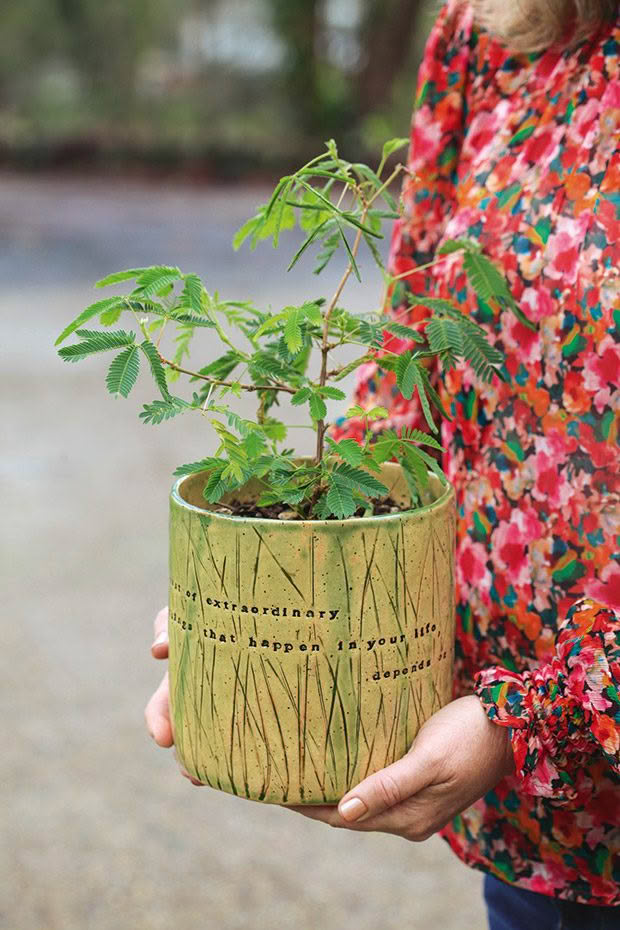
Mimosa pudica, the so-called touch-me-not or sensitive plant, has a curious habit. When tickled, its hinged leaves flinch and fold up, an evolutionary adaptation that protects it from grazing predators (and children’s prodding fingers). “Mimosa is a roadside weed in tropical climates but a delicate pot plant here,” says Lynda. The pot was made by West Auckland ceramic artist Fiona Henderson, whose pandemic ceramics are embellished with pick-me-up quotations. This one reads: “Perhaps the amount of extraordinary things that happen in your life depends on what you notice”.
I’ve long suspected that the natural world has a black sense of humour, inspired more by Murphy’s Law than Mendel’s Laws of pollination. If Mother Nature were a stand-up comedian, she’d be Ricky Gervais, deadpanning “are you having a larf?” at gardeners like me who push the boundaries of biology, budget and climate.
Am I the punchline, I wonder, when yellow daffodils bloom in my pink border, or my ‘Snow Dove’ magnolia trees break bud in the middle of a weather bomb, turning their perfect white petals into sodden brown blobs? (Nature has a dry wit; how else can you explain why the sure-fire way to break a drought is to spend hours hand-watering? No sooner do you turn off the tap, it’ll hose down. Indeed, it’ll probably flood.)
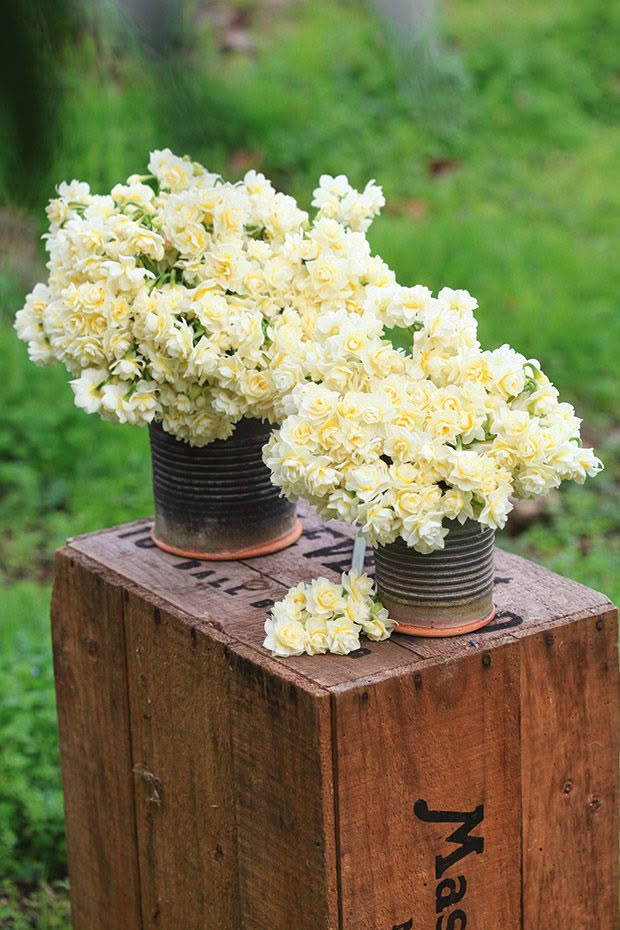
Narcissus’ Erlicheer’ hangs its head in shame after heavy rain. “The flowers break their necks under the weight of the wet blooms and end up bedraggled in the mud if I don’t pick them. What makes this capitulation worse is that I suffer from terrible hayfever, so I can’t even take them indoors to enjoy”.
I planted a grove of nine ‘Snow Dove’ magnolias in my garden. I now have eight, for nature is allergic to symmetry. Design any formal avenue of trees, and the one at the front will turn up its toes. Ditto the middle plant in a hedge. Conversely, the ugly and the unwanted flourish in the most prominent positions.
The last time I opened Foggydale Farm to the public, I was shoulder-tapped by a stream of visitors begging to know the name of the burgundy-flowered, jagged, silver plant burgeoning with tūī at the back of my veggie patch. That beautiful bobby-dazzler was none other than Melianthus major, a noxious weed.
Speaking of vegetable gardens, I’m frequently asked if it is cheaper to grow your food as grocery prices go up. It definitely is, I tell novice gardeners, though not necessarily the food you want to eat. Every summer, I struggle to grow a single decent iceberg lettuce while red-veined sorrel (Rumex sanguineus) and silverbeet spawn with impunity. Naturally, my family refuses to eat either. The sorrel, aptly nicknamed bloody dock, hitchhiked here from my former city garden and has defied my decade-long effort to evict it.
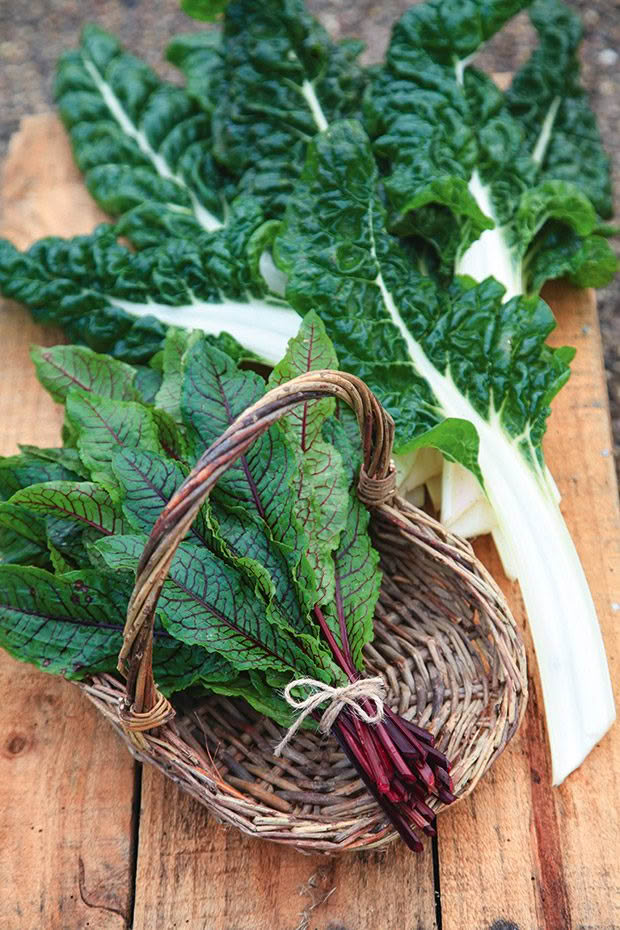
Red-veined sorrel and silverbeet flourish year-round in Lynda’s vegetable garden, despite her complete culinary contempt for both crops.
The snapdragons my grandmother also adored seem to share sorrel’s up-yours attitude to seeding. Every year, I sow the pixie-dust seed of covetable ‘Twinny Appleblossom’ antirrhinums to no avail. The cheap and cheerful potted colour varieties mock me by self-seeding on our driveway. Gardening is a great leveler, especially for so-called experts like moi. I can grow every type of citrus bar the easiest — grapefruit — which I’m forced to blag off our community Facebook page. And when I volunteered to host our local school’s Trees for Survival riparian planting last winter, I didn’t think I’d end up shamefaced over our mini forest’s failure to thrive.
- Lynda harvests basketfuls of lemons, limes, mandarins and oranges with no complaint, but her grapefruit tree stubbornly refuses to fruit.
- It’s easier to look on the bright side of life when your glass is half-full of homemade mulled wine. The vintage pottery goblets were found at The Depot antiques store in Paeroa.
It started so promisingly. My husband hired a post-hole borer, and two dozen eight-year-olds set about planting 810 fledgling cabbage trees, coprosma, māhoe, mānuka and flax, giving each plant the “pūkeko pull test” to ensure it couldn’t be uprooted by sassy swamphens.
As it turned out, the pūkeko weren’t the problem. Instead, a week of hard frosts wiped out the māhoe, then rabbits chewed every leaf off every coprosma and gave the cabbage trees military buzz cuts.
I intended to spray the seedlings with TreePel, a dried egg and resin animal repellent, but our labrador, Cricket, got into my shed and did what labradors do. He wolfed down the entire one-kilogramme bag of egg powder — that’s the equivalent of 188 eggs — then proceeded to repel all of us with the consequences.
Meanwhile, I have a job ahead replanting natives. When one of the school mums turned up to check out their progress, she looked at the motley mix of survivors and, with a nod to the stakes I made from lichen-encrusted tōtara fence battens, asked, “is that a memorial to our fallen comrades?”
- Returning pasture to native wetland would be easier without rabbits. Lynda hopes she’ll have better luck planting akeake (Dodonaea viscosa), the Māori name of which translates as “forever forever”.
- In the country, bartering yields the best bargains, says Lynda. “I gave our local fencing contractor a bottle of whiskey in return for a boot-load of old tōtara battens to upcycle. Sadly, it took me longer to hot-poker the kids’ names on them than it took for the rabbits to eat the trees they were supposed to stake.”
Her quip was in keeping with the American housewife-turned-humourist Erma Bombeck’s motto: “If you can’t make it better, you can laugh at it.”
In the 1970s, Bombeck’s syndicated columns were published in a collection called The Grass is Always Greener Over the Septic Tank, a reminder that when life hands you manure, at least you can fertilize your garden.
Love this story? Subscribe now!
 This article first appeared in NZ Life & Leisure Magazine.
This article first appeared in NZ Life & Leisure Magazine.
